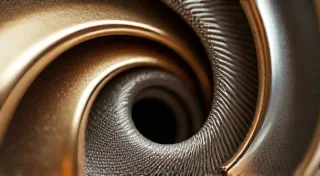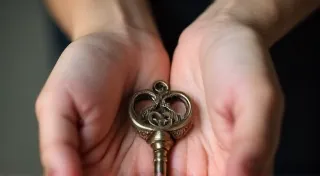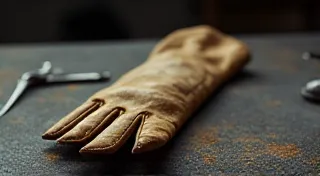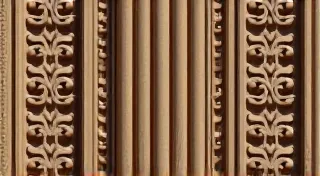Collecting Antique Music Boxes: A Journey Through Time and Melody
Welcome to a captivating exploration of the enchanting world of antique music boxes. More than just beautiful objects, these intricate creations are time capsules, miniature theaters of sound, and poignant reflections of history, artistry, and human emotion. Whether you're a seasoned collector or simply drawn to the allure of their delicate melodies, this site is your guide to understanding and appreciating the fascinating realm of music box collecting. For serious enthusiasts, the pursuit of rare and exceptional pieces makes collectible music a rewarding passion. The allure isn’t simply about the object; it’s about the stories they hold, the craftsmanship they represent, and the connection they provide to a bygone era.
The rhythmic tick of the escapement, the gentle rise and fall of the cylinder, the cascade of notes – these are the hallmarks of an antique music box, a miniature orchestra contained within a meticulously crafted case. From the opulent creations of the Victorian era to the more modest, yet equally charming, pieces of earlier periods, vintage music boxes represent a unique blend of mechanical ingenuity, artistic design, and social context. These weren’t mere toys; they were status symbols, expressions of refined taste, and often, treasured family heirlooms passed down through generations. The intrinsic value of collectible music lies not only in its scarcity but also in its ability to evoke a sense of nostalgia and connection to the past. This guide will delve into the intricacies of collecting, from identifying different types of music boxes to understanding the factors that influence their value and significance.
A Legacy of Craftsmanship and Innovation: The Evolution of the Music Box
The history of music boxes is surprisingly rich and complex, far exceeding the perception of simple mechanical novelty items. Their origins can be traced back to the early 19th century in Switzerland and Austria, born from the desire to bring the elegance of automated musical instruments, previously confined to larger, more complex pieces like grand pianos and orchestrions, into the homes of a growing middle class. The earliest examples, often referred to as "polyphonic music boxes," utilized a pinned cylinder mechanism to produce a series of notes. These early models were significantly more expensive and primarily accessible to the upper echelons of society. The subsequent development of disc-playing music boxes significantly broadened the accessibility and popularity of these captivating devices. The evolution from pinned cylinders to intricately engraved discs marked a pivotal moment in music box history, enabling longer and more complex musical pieces to be produced. The innovation didn't stop there; advancements in escapement mechanisms, comb materials, and decorative techniques continuously refined the quality and artistry of these creations. Understanding this evolutionary timeline is crucial for collectors seeking to appreciate the nuances of different music box types and their historical context. Examining the shift from simple, functional designs to elaborately decorated and technically advanced pieces allows us to truly grasp the ingenuity and creativity of the artisans who shaped this unique craft. Many were expressions of status, and part of the gilded cage of the wealthy.
Decoding the Varieties: Types of Antique Music Boxes
The world of antique music boxes is incredibly diverse, encompassing a wide range of styles, mechanisms, and decorative themes. Identifying these different types is fundamental for both novice and experienced collectors. Here's a brief overview of some of the most common varieties:
- Cylinder Music Boxes: These represent the earliest form of music box, utilizing a pinned metal cylinder that rotates against a comb to produce sound. They are generally simpler in design and often less ornate than later models.
- Disc Music Boxes: This type, which quickly eclipsed the cylinder box, uses a flat metal disc with tiny pins arranged to play music when rotated over a comb. They offer greater musical complexity and length.
- Bird-Cage Music Boxes: A particularly charming and sought-after variety, these feature a mechanical bird within a cage that sings or chirps along with the music.
- Automaton Music Boxes: These boxes combine musical performance with intricate mechanical movements, often depicting scenes or characters. They are highly valued for their artistic and technical sophistication. The artistry often represented a lost art of automaton decoration.
- Swiss Music Boxes: Renowned for their exceptional quality and intricate craftsmanship, Swiss music boxes are among the most prized by collectors worldwide.
- American Music Boxes: While not as widely known as their Swiss counterparts, American music boxes often exhibit unique designs and decorative styles reflecting the aesthetics of the period.
Unveiling Value: Factors Influencing the Price of Antique Music Boxes
Determining the value of an antique music box involves considering several key factors. While rarity is often a primary driver of price, other elements play a significant role:
- Rarity: Limited production runs and unique designs command higher prices.
- Condition: A well-preserved music box, with original components and minimal wear, is significantly more valuable than a damaged or heavily restored example. The history of repair and restoration can be a fascinating piece of the resonance of absence.
- Functionality: A music box that plays flawlessly is worth considerably more than one with mechanical issues. The fragility of the mechanisms highlights ephemeral harmonies.
- Origin: Swiss music boxes are generally more valuable than those from other countries due to their reputation for superior craftsmanship.
- Musical Selection: Boxes that play rare or desirable tunes often command higher prices.
- Provenance: A documented history of ownership (provenance) can significantly enhance the value of a music box.
- Decorative Quality: The artistry of the case decoration – whether it’s intricate marquetry, hand-painted enamel, or elaborate carving – adds to the overall value. The artistry was sometimes intertwined with the cabinetmaker's secret.
Care and Preservation: A Delicate Balance
Maintaining antique music boxes requires careful handling and specialized knowledge. Understanding their construction and vulnerabilities is crucial for ensuring their longevity. The challenges are exemplified by the metronome’s measure, as the passage of time itself presents a constant threat.
Beyond the Mechanics: The Cultural Significance
Antique music boxes offer a unique window into the social and cultural norms of past eras. They reflect prevailing attitudes towards music, ornamentation, and personal expression. For some, they represented the inheritance of echoes, connecting families across generations. They were often components of the miniature theater of Victorian life, carefully staged and enjoyed. They held personal and familial the clockwork heart.
Discovering the Makers and Their Stories
The people behind these treasures often remain largely unknown. Uncovering the stories of the makers—the craftsmen, engineers, and designers—adds a deeper layer of appreciation. Perhaps they operated within silent springs, abandoned workshops with untold stories.
Navigating the Market and Avoiding Deception
The antique music box market can be complex and fraught with challenges. Collectors need to be wary of fakes and misrepresented items. It’s a journey through the collector’s labyrinth.
The Art of Display and Exhibition
Showcasing antique music boxes requires a thoughtful approach, preserving their beauty while engaging the viewer. Discover how professionals tackle the curator's eye.
Happy music box collecting!
Further Exploration:
- A Clockwork Requiem: The Influence of Victorian Mourning Practices on Music Box Design
- Beyond the Melody: The Alchemy of Sound – Material Science in Antique Music Boxes
- Chromatic Ghosts: The Lost Art of Automaton Decoration in Music Boxes
- Echoes in Ivory: Decoding the Language of Musical Motifs in Vintage Music Boxes
- Ephemeral Harmonies: The Fragility of Preserving Music Box Mechanisms
- Lost in Miniature: Exploring the Sensory Experience of Antique Music Box Ownership
- The Resonance of Absence: How Damage and Restoration Reveal an Object’s Past
- Silent Springs: The Unspoken Stories Behind Abandoned Music Box Workshops
- The Cabinetmaker’s Secret: Exploring the Intersection of Furniture and Music Box Design
- The Cartographer of Sound: Charting the Geographic Diffusion of Music Box Manufacturing
- The Cartography of Sound: Mapping Musical Motifs Across Antique Music Box Generations
- The Clockwork Heart: Unraveling the Emotional Resonance of Antique Music Boxes
- The Collector’s Labyrinth: Navigating the Rarities and Fakes in the Antique Music Box Market
- The Curator's Eye: Exhibiting the Soul of Antique Music Boxes
- The Gilded Cage: Exploring the Social Class and Status Symbolism of Music Boxes
- The Inheritance of Echoes: How Antique Music Boxes Connect Generations
- The Metronome’s Measure: Temporal Distortion and the Experience of Time in Antique Music Boxes
- The Miniature Theater: Animating the Narrative Within Antique Music Boxes
- Whispers of Ivory & Steel: The Women Behind the Antique Music Box Legacy


















